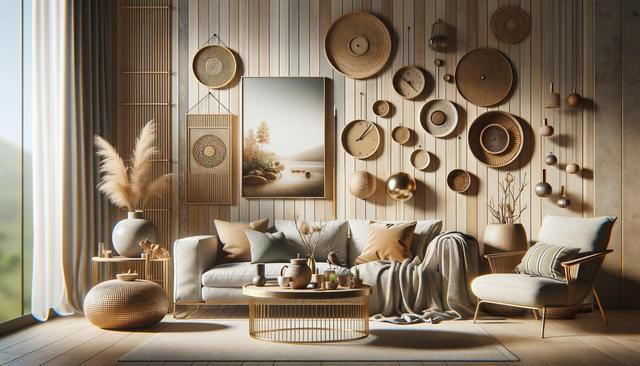Choosing Accessories That Complement Your Style
When it comes to stylish home accessories, the first step is identifying a design style that suits your personality and living space. Whether you’re drawn to minimalist aesthetics, vintage charm, or modern eclecticism, your accessories should reflect and enhance that choice. Accessories such as vases, trays, and clocks can serve both functional and visual purposes. It’s essential to select items that align with the color scheme, textures, and overall mood of a room.
Consider the following when choosing accessories:
- Consistency in color palette to maintain harmony
- Mixing textures like wood, metal, glass, and fabric for depth
- Proportional sizing to avoid visual clutter or imbalance
Layering different types of accessories—such as combining a sculptural object with a soft textile throw or a stack of books with a decorative bowl—can add dimension and interest to a space. The goal is to create an environment that feels cohesive yet dynamic.
Strategic Placement for Maximum Impact
Where you place your home accessories can significantly influence the atmosphere of a room. Strategic positioning helps highlight focal points and enhances the flow of a space. Accessories should not be randomly scattered; instead, they should be thoughtfully arranged to create balance and interest. For example, placing a large decorative mirror opposite a window can reflect light and make a small room feel larger.
Key areas to focus on include:
- Coffee tables and side tables
- Shelves and bookcases
- Entryway consoles
- Bedside tables
Grouping items in odd numbers, such as three or five, is a common styling approach that often results in more visually pleasing arrangements. Items of varying heights and sizes can be used to create a layered look that draws the eye naturally across the display.
Material Choices and Their Influence
The materials used in home accessories contribute significantly to the overall tone of a room. Natural materials like stone, wood, and woven fibers introduce warmth and texture, while metals such as brass or chrome can create a more polished or industrial vibe. Glass and ceramics offer versatility and can work in both classic and contemporary interiors.
Some popular materials for accessories include:
- Wood for a rustic or organic feel
- Marble or stone for an upscale, natural look
- Textiles such as linen or wool for softness and comfort
Mixing materials is a great way to avoid monotony and add complexity to your decor. For instance, combining a brass lamp with a wooden side table and a ceramic vase introduces a variety of textures without overwhelming the space.
Seasonal and Rotating Accessories
One of the advantages of home accessories is their flexibility. Unlike furniture or fixed installations, accessories can be rotated to reflect seasonal changes or evolving tastes. This allows for regular refreshment of your living space without major investments. For example, during colder months, you might opt for heavy knit throws and darker-toned candles, while lighter fabrics and pastel accents are more suitable for spring and summer.
Simple ways to update accessories seasonally include:
- Changing cushion covers and throws
- Switching out artwork or photography
- Replacing candles, vases, or floral arrangements
This dynamic approach keeps your home looking current and engaging throughout the year. It also allows you to experiment with trends in a low-risk way, adding personality without permanent commitment.
Personal Touches and Meaningful Elements
Stylish home accessories are most effective when they include personal or meaningful elements. Incorporating items that tell your story—such as family heirlooms, travel souvenirs, or handmade pieces—adds authenticity and emotional value to your space. These accessories help transform a house into a home by reflecting your experiences and values.
Consider including:
- Framed family photos or custom artwork
- Objects collected from meaningful travels
- Books that reflect your interests or passions
While trends can offer inspiration, grounding your decor in personal meaning ensures that your home remains a place of comfort and identity. Striking the right balance between style and sentiment is key to creating a living space that feels both elegant and inviting.
Conclusion: Curating a Space That Reflects You
Stylish home accessories offer a practical and creative means to enhance interior spaces. By choosing items that align with your design style, thoughtfully placing them, mixing diverse materials, rotating seasonally, and adding personal touches, you can build an environment that feels both cohesive and uniquely yours. Whether you’re decorating a new space or refreshing a familiar one, accessories provide the flexibility to evolve your home’s look with ease and intention. Ultimately, a well-curated collection of accessories can elevate everyday living and make your space feel truly complete.


